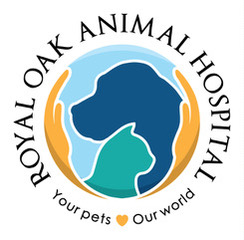Library
-
Epiphora or excessive tearing from the eyes can be a sign of tear duct blockage or more serious eye problems. Clinical signs include dampness beneath the eyes, reddish-brown staining of the fur beneath the eyes, odor, skin irritation, and skin infection. The facial anatomy of brachycephalic breeds may play a role in this condition. Treatment may include flushing of the nasolacrimal duct, or surgery to open the lacrimal puncta. The prognosis is variable and dependent on whether the underlying cause can be found and treated.
-
Injuries to the eye and surrounding areas of the head and face are relatively common in horses and ponies due to their inquisitive nature and as a result of "arguments" with each other and with structures such as stable doors, fence posts, trees, etc.
-
You’ve probably heard lots of funny cat anecdotes; about how you don’t own them…they own YOU; how they feel superior to everyone, especially dogs; that they expect to be treated like royalty. If you are considering a feline acquisition, first consider this: lots of those remarks are true! This handout explains the other factors to consider in selecting the cat most likely to choose your family, too.
-
Dogs can be amazing family members and greatly enrich our lives! Adding a dog to the family is also a serious commitment, and research before choosing a dog will help set the family and the dog up for success. This handout goes over some factors to consider when selecting a dog.
-
Fading puppy syndrome describes puppies that decline in health and die within about two weeks of birth. Neonatal puppies are fragile and so there can be many causes of this syndrome including birth defects, inadequate care from the mother, poor health status of the mother and/or infectious diseases. As well as addressing a specific cause, treatment focuses on maintaining hydration and warmth while providing adequate nutrition. Environmental hygiene is extremely important.
-
In pregnant mares, unlike most other animals, antibodies do not cross the placenta into the foal's blood stream before birth. Therefore, when a foal is born it has no natural defence mechanisms against infection because it has no antibodies, that are the blood's special immune proteins, with which to fight infection.
-
It is a well recognized saying 'no foot no horse'. Caring for your horse's feet and hooves and ensuring that he is attended to regularly by your farrier will safeguard his long term soundness.
-
A feather cyst is a malformation of a feather follicle whereby the feather(s) do not exit the skin, and instead become buried in a cyst under the skin. They can become quite large and be painful to the pet. These cysts require veterinary attention and if injured, may bleed extensively.
-
A fecal Baermann is a special fecal test used to diagnose infection by parasites that pass larvae in stool instead of eggs. A small golf-ball sized sample of fresh stool is mixed with warm water to encourage larvae to separate from the fecal material to allow identification. The most common parasite diagnosed with a fecal Baermann is lungworm, which typically causes signs of coughing.
-
Ferrets are carnivores and cannot handle a diet containing more than 4% fiber. A good quality ferret diet should contain 32-40% protein and 10-15% fat. There are several good commercial dry foods for ferrets.


